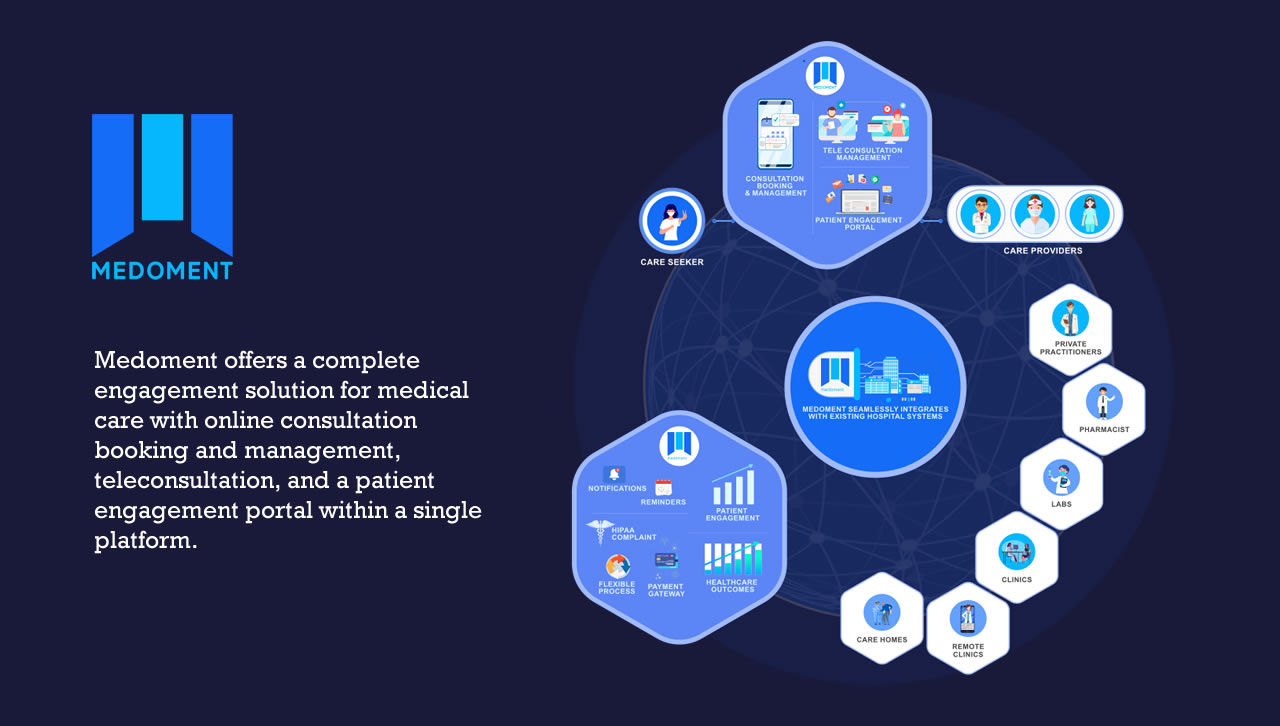
New Total Engagement Platform to Provide Solutions to Current Challenges In Healthcare Provision
December 15, 2020
Overcoming the Challenges of the COVID-19 Pandemic
January 15, 20212020 has been a challenging year for all sections of society. The COVID-19 pandemic has brought the greatest period of disruptive change and uncertainty since the last world war, testing the agility and resilience of organizations.
The healthcare industry has borne the brunt of the challenges thrown up by the pandemic. Healthcare workers face greater exposure to the virus than the general public. Tragically, thousands of healthcare workers worldwide have lost their lives to COVID-19.
Although the scientific community had warned of a global pandemic, the preparedness plans of many organizations were insufficient when the novel coronavirus emerged.
The pandemic has challenged the assumptions on which the structure and operations of organizations are based.
How can we come through this time of uncertainty to emerge stronger and face a future crisis confidently?
Challenges for Healthcare
Imbalances between demand and capacity resulted in an urgent reorganization of healthcare services and protocols and a rush to procure personal protective equipment (PPE).
COVID-19 highlighted the imbalances between demand and capacity in the healthcare industry.
Measures to prevent and treat COVID-19 have impacted healthcare for other conditions, as face-to-face contacts been reduced, and resources have been redirected. Routine consultations have been postponed, resulting in delayed diagnosis, treatment, and longer waiting lists for patients who do not have Covid-19.
Healthcare providers are seeking to find a balance to ensure that morbidity and mortality from cancer and non-communicable diseases does not far outweigh that prevented for COVID-19.
Reduced revenues, the cost of additional infection control measures and the uncertainty caused by the pandemic, have led to financial instability for many organizations.
Helping you through the Crisis
There have been an extraordinary number of innovative responses to the current pandemic. Partnerships between public, private and charitable organizations have enabled a greater sharing of knowledge, data and resources. Collaborative efforts have enabled the rapid production of diagnostic tests, therapies and vaccines in development.
“Fostering partnerships for greater sharing of knowledge and resources”
The COVID-19 era has seen a marked expansion in remote healthcare delivery, such as the use of telemedicine and video consultations to reduce the risk of viral transmission. Use of these technologies may improve accessibility and efficiency post-pandemic, especially if the current changes in regulation and remuneration for e-health related to the pandemic in many countries become permanent.
“Remote healthcare delivery with the use of telemedicine will reduce the risk of viral transmission”
“Use of technology improves accessibility and efficiency, serving as a permanent solution in the post pandemic era”
Use of telemedicine can improve efficiency and accessibility post-pandemic.
The need for improved planning and preparedness for pandemics has been brought into sharp focus. Early warning systems currently in development, such as EPI-BRAIN (World Health Organization and World Economic Forum), a collaborative data science and analytics project, will help detect future outbreaks and enable preventive measures.
“Availability of data, collaborative data science and analytics project, will help detect future outbreaks and enable preventive measures”
Travel restrictions have led to increased opportunities for health professionals around the world to network virtually though on-line conferences and webinars. There has been increased public awareness of the value of the healthcare sector. The importance of preventive measures and the need for adequate healthcare coverage are to the fore.
“Travel restrictions have led to increased opportunities for healthcare professionals around the world to network virtually”
Innovations and new ways of working will remain relevant beyond the current circumstances. How can we leverage these opportunities to create more resilient organizations?
– Take advantage of the opportunity to reassess systems and strategies.
– Analyze potential threats and untapped potential to aid planning for medical surge capacity and increased agility in your organization.
– Rethink scheduling and prioritize waiting lists to optimize limited clinical time and resources.
– Expand on opportunities for networking and collaboration with other sectors and professions.
– Build on the increased awareness of health issues by developing clear communication and education strategies to increase public confidence.
– The use of multiple systems and platforms for scheduling, teleconsultations, prescribing, messaging, etc. creates barriers to seamless patient care. Integrated patient management systems increase efficiency and security.
Integrated management systems like Medoment increase efficiency.
Medoment – a total engagement platform optimizes user experience and improves outcomes by integrating all aspects of the care pathway, from initial contact to scheduling, remote care, treatment and follow-up.
RECENT POSTS
- 7 Benefits of Medoment RPM for Your Practice
- Remote Patient Monitoring for Chronic Disease Management
- Can telemedicine help reduce the impact of cardiovascular diseases?
- Can telemedicine be used during pregnancy?
- Can Telemedicine Improve Diabetes Management?
- How to conduct a physical exam via telemedicine
- How can MEDOMENT Optimise Patient Engagement?
- Can patient engagement portals improve healthcare?
- How to choose the right telemedicine software partner
- How to invest in telemedicine software

